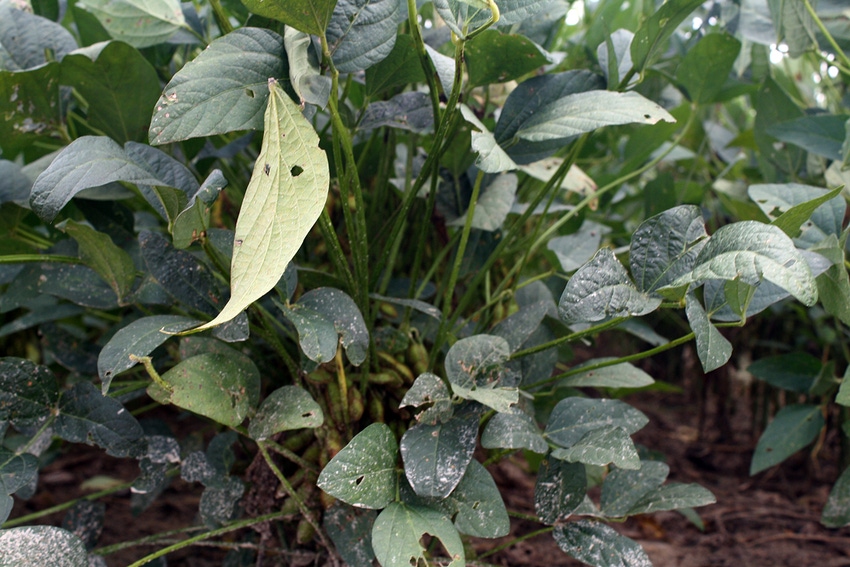October 7, 2020

The redbanded stink bug continues to be a major threat to Alabama soybean production. Alabama Extension professionals have heard reports and seen fields with heavy infestations of RBSB as far north as Chilton County this year. There is still the potential for RBSB to infest late beans in the Tennessee Valley before the season is over.
Soybeans in the R5 to R6 growth stages are highly attractive and most susceptible to redbanded stink bugs. However, this pest can continue to cause issues with seed quality through the R7 stage if conditions do not allow for normal drying and maturation of beans. Growers can find detailed information about identifying RBSB at www.aces.edu.
In general, RBSB is smaller than Alabama’s traditional stink bugs (e.g. southern green, green, brown) but it does significantly more damage. The RBSB is green with a red or purplish stripe across its thorax and a spine sticking up from its abdomen (belly). Because of the significant risk of damage from RBSB, thresholds are lower than Alabama’s traditional stink bugs. Tank-mixtures of multiple insecticide modes of action are required to effectively manage this pest. Current recommended thresholds and insecticides can be found in the Alabama Extension Soybean IPM Guide.
Defoliating Caterpillars
Extension professionals are also hearing reports and seeing infestations of velvetbean caterpillars (VBC) and soybean loopers (SBL) in soybeans across the state. These pests are ferocious feeders that can completely defoliate soybean fields. The velvetbean caterpillar may be green or black and has four pairs of prolegs. This differentiates VBC from the soybean looper, which has two pairs of prolegs. Details about SBL are available on the Extension website.
Another difference between VBC and SBL is that defoliation from VBC begins in the upper portion of the soybean canopy while SBL defoliation begins in the lower portion. This is important because the SBL is resistant to many insecticides that still control VBC.
When making treatment decisions for defoliating pests, thresholds are based on the percentage of defoliation from the entire crop canopy. Soybeans are most susceptible to defoliation from the R1 to R6.5 growth stage. Current thresholds and recommended insecticides can be found in the Alabama Extension Soybean IPM Guide.
Source: Alabama Cooperative Extension System, which is solely responsible for the information provided and is wholly owned by the source. Informa Business Media and all its subsidiaries are not responsible for any of the content contained in this information asset.
Read more about:
Redbanded Stink BugYou May Also Like




